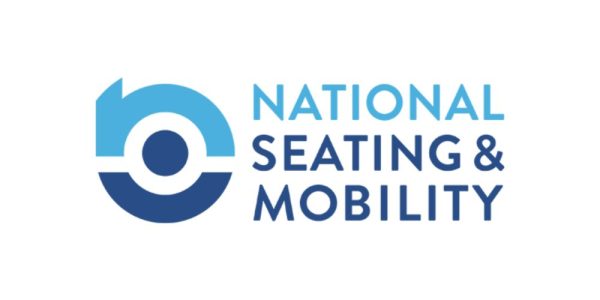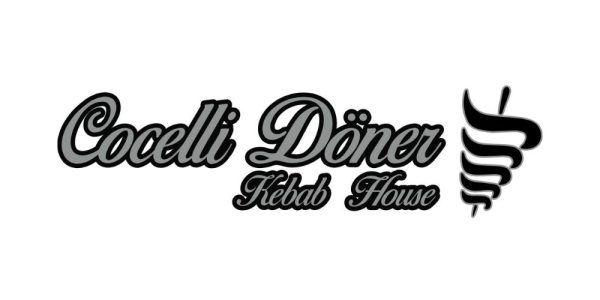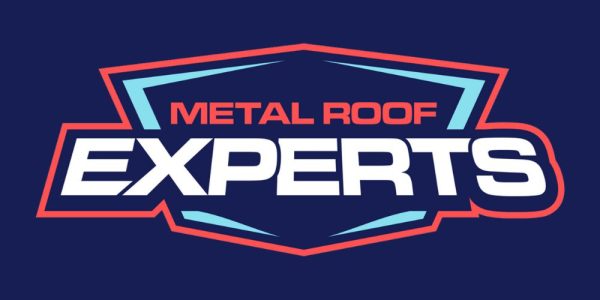
This article is brought to you by Della Dwyer.
Buying a home is one of the most significant financial decisions most Canadians will make in their lifetime, and securing the right mortgage is a key step in the process.
But, with so many mortgage options available in Canada, it’s important to understand the different types. That way you can choose the one that best suits your financial situation and homeownership goals.
In this guide, we’ll walk through the main types of mortgages available in Canada and help you figure out which might be the best fit for you.
1. Conventional vs. high-ratio mortgages
The first types of mortgages you should know the difference between are conventional mortgages and high-ratio mortgages. This distinction is based on the size of your down payment:
Conventional mortgage
A conventional mortgage is when the homebuyer makes a down payment of at least 20% of the home's purchase price. This type of mortgage typically doesn't require mortgage default insurance, which can save you on additional costs.
- Advantages: No requirement for mortgage insurance, which generally means lower monthly payments.
- Disadvantages: Requires a larger upfront down payment, which might not be feasible for some buyers.
When to consider a conventional mortgage
Consider a conventional mortgage if you have at least a 20% down payment saved up and want to avoid the extra cost of mortgage default insurance.
High-ratio mortgage
If your down payment is less than 20%, you’ll be taking out a high-ratio mortgage. In this case, you are required by law to obtain mortgage default insurance through the Canada Mortgage and Housing Corporation (CMHC). This insurance protects the lender in case you default on the loan, but the cost is passed on to the buyer and added to the mortgage balance.
- Advantages: Allows you to buy a home with a smaller down payment.
- Disadvantages: Higher monthly payments due to the cost of mortgage insurance.
When to consider a high-ratio mortgage
A high-ratio mortgage is ideal if you're a first-time homebuyer with less than 20% down and want to enter the housing market sooner. If you can comfortably afford the higher payments and are eager to purchase, this may be a good option.
2. Fixed-rate vs. variable-rate mortgages
Another key decision is choosing between a fixed-rate, variable-rate, or hybrid mortgage. Each option has pros and cons, and your choice depends largely on your risk tolerance and financial stability.
Fixed-rate mortgage
A fixed-rate mortgage means the interest rate on your mortgage stays the same for the duration of the term (typically 1-5 years). This provides stability and predictability, as your mortgage payments will remain constant.
- Advantages: Predictable monthly payments, protection against interest rate increases.
- Disadvantages: Higher initial interest rates than variable-rate mortgages, no benefit if rates fall.
When to consider a fixed-rate mortgage
A fixed-rate mortgage is best if you value predictability and stability in your finances. If you expect interest rates to rise or simply prefer knowing your payment amounts throughout the term, this option provides peace of mind.
Variable-rate mortgage
A variable-rate mortgage fluctuates with the prime interest rate set by your lender. While this means your payments could decrease if rates drop, they could also increase if rates rise.
- Advantages: Potentially lower interest rates, savings if interest rates fall.
- Disadvantages: Unpredictable payments, risk of higher payments if interest rates rise.
When to consider a variable-rate mortgage
Consider a variable-rate mortgage if you can tolerate some risk and have flexibility in your budget to handle potential rate increases. If you believe rates will stay low or fall further, this could be a money-saving option.
Hybrid mortgages
A hybrid mortgage (or split mortgage) is a combination of both fixed-rate and variable-rate components. This means part of your mortgage is subject to a fixed interest rate while the other part fluctuates with market rates. For example, you might have 60% of your mortgage as fixed and 40% as variable, or another ratio based on your preference and lender’s options.
- Advantages: Offers a balance of stability (from the fixed portion) and potential savings (from the variable portion). You can benefit from lower variable rates while still securing protection from possible rate hikes for part of the loan.
- Disadvantages: More complex to manage than fully fixed or fully variable mortgages. If rates rise sharply, the variable portion may still result in higher payments.
When to consider a hybrid mortgage
A hybrid mortgage may be right for you if you want the best of both worlds: stability for a portion of your mortgage while still being able to take advantage of potentially lower variable rates. It's a good option if you can't decide between fixed and variable rates or want to hedge against fluctuating interest rates.
3. Open vs. closed mortgages (with convertible options)
The terms open and closed mortgages refer to how flexible your repayment schedule is. However, within these categories, some lenders also offer convertible mortgages, which allow you to switch between variable and fixed rates during the term without penalties.
Open mortgage
An open mortgage offers flexibility in repayment. You can pay off the mortgage in full or make large additional payments without penalty.
- Advantages: Full repayment flexibility, ideal if you expect to pay off your mortgage early.
- Disadvantages: Higher interest rates compared to closed mortgages.
When to consider an open mortgage
Choose an open mortgage if you plan to pay off your mortgage quickly or expect a financial windfall. It's also suitable if you want the flexibility to make large payments without penalties.
Closed mortgage
A closed mortgage offers lower interest rates but limits how much extra you can pay toward your mortgage each year. Lenders typically allow a certain percentage of the principal to be paid down annually without penalty, but exceeding that could result in hefty fees.
- Advantages: Lower interest rates, ideal for buyers who don't expect to pay off their mortgage early.
- Disadvantages: Less flexibility in repayment, potential penalties for early repayment.
When to consider a closed mortgage
A closed mortgage is ideal if you're seeking a lower interest rate and don't anticipate paying off your mortgage early. It’s a good option if you're comfortable with your repayment schedule and are not expecting to make large lump-sum payments.
Convertible mortgage
A convertible mortgage allows you to switch from a variable-rate mortgage to a fixed-rate mortgage during the term without penalties. It offers a blend of the flexibility of variable rates and the stability of fixed rates.
- Advantages: Flexibility to convert to a fixed-rate mortgage without penalties, providing security if interest rates rise.
- Disadvantages: Slightly higher initial interest rates compared to standard variable or fixed-rate options, lender-specific conversion terms.
When to consider a convertible mortgage
Consider a convertible mortgage if you want the option to start with a variable rate but prefer the security of switching to a fixed rate if interest rates increase. It’s ideal if you're unsure about long-term rate trends.
4. Short-term vs. long-term mortgages
When choosing a mortgage, you'll also need to decide on the term, which is the length of time your mortgage agreement is in effect before you have to renew.
Short-term mortgages
Short-term mortgages generally have terms ranging from 6 months to 3 years. They’re ideal if you expect interest rates to drop soon or if you plan to sell or refinance your home in the near future.
- Advantages: Flexibility to refinance or renegotiate, potential for lower interest rates.
- Disadvantages: Need to renew more frequently, less stability.
When to consider a short-term mortgage
A short-term mortgage may be ideal if you expect to sell or refinance soon, or if you're betting on interest rates decreasing in the near future. It’s also good for those who prefer more frequent flexibility in their mortgage arrangements.
Long-term mortgages
Long-term mortgages usually have terms of 4 to 10 years. They offer more stability with consistent payments, making them a good option for homeowners who prefer predictability and plan to stay in their homes for a while.
- Advantages: Stability and peace of mind, fewer renewals.
- Disadvantages: Potentially higher interest rates, locked in for a longer period.
When to consider a long-term mortgage
A long-term mortgage is a solid choice if you plan to stay in your home for several years and want predictable payments over the long haul. It’s also ideal if you’re looking to lock in your rate and avoid frequent renewals.
5. Reverse mortgages
A reverse mortgage is a unique option available to Canadians aged 55 and older who own their home outright or have significant equity in it. With a reverse mortgage, you can borrow against the value of your home, receiving payments while continuing to live in the property. The loan is typically repaid when the homeowner sells the house or passes away.
- Advantages: Provides access to home equity without needing to move, no regular payments required.
- Disadvantages: Interest compounds over time, reducing the value of the estate left to heirs.
When to consider a reverse mortgage
A reverse mortgage is ideal for homeowners 55+ who want to unlock the value of their home without having to sell or move. It's a good option if you need additional income in retirement and aren’t concerned about leaving a large estate.
6. Home equity line of credit (HELOC)
A Home Equity Line of Credit (HELOC) allows homeowners to borrow against their home’s equity as needed, up to a certain limit. This type of mortgage is revolving, meaning you can borrow, pay it back, and borrow again. It can be a great option for home renovations or other large expenses.
- Advantages: Flexible borrowing, only pay interest on the amount borrowed.
- Disadvantages: Variable interest rates, the risk of over-borrowing, and fluctuating payments.
When to consider a HELOC
You should consider a HELOC if you have significant equity in your home and need access to flexible funds. It is also a suitable option if you are planning a home renovation or other large expense but do not want to take out a traditional loan. If you are disciplined about repayment and prefer borrowing only what you need, a HELOC may be a good fit. Additionally, if you can handle the potential fluctuations in interest rates and payments, this option could work well for you.
7. Portable mortgages
If you plan on moving within the term of your mortgage, a portable mortgage could be a great option. This type of mortgage allows you to transfer your existing mortgage to a new property without paying penalties or having to requalify for a new loan.
- Advantages: No penalties for moving, can transfer favorable terms.
- Disadvantages: May not suit all lenders or new properties.
When to consider a portable mortgage
You should think about a portable mortgage if you anticipate moving to a new home before your mortgage term ends. This option allows you to avoid the penalties associated with breaking your mortgage early. If you have secured favorable mortgage terms that you want to maintain while purchasing a new property, a portable mortgage is advantageous. Finally, if you are confident that your new home and lender will qualify for a portable mortgage, this option may be ideal for your situation.
Which mortgage is right for you?
Choosing the right mortgage depends on a combination of factors including your financial situation, future plans, and risk tolerance. Here's a quick summary to help you decide:
- First-Time Homebuyer with a Small Down Payment: A high-ratio, fixed-rate, closed mortgage could offer the security of predictable payments and a lower down payment requirement.
- Comfortable with Risk and Want Flexibility: A variable-rate, open mortgage provides the potential for lower rates and the ability to pay down your mortgage faster.
- Plan to Move or Pay Off Your Mortgage Early: An open or portable mortgage could be the best option if you anticipate paying off your loan ahead of schedule or moving.
- Looking for Stability: A fixed-rate, long-term, closed mortgage offers predictability and peace of mind with lower interest rates locked in for a longer period.
Before making a decision, it's essential to consult with a mortgage broker or financial advisor to discuss your specific needs and circumstances. Keep in mind that the mortgage market is constantly evolving, and interest rates can change, making it important to stay informed about your options.
Choosing the right type of mortgage
Understanding the types of mortgages available in Canada is the first step in making a well-informed decision about home financing. Whether you're a first-time homebuyer, a seasoned homeowner, or looking for a reverse mortgage or HELOC option, carefully weighing the pros and cons of each mortgage type can help ensure you choose the best one for your needs. By taking the time to evaluate your financial goals and consulting with a mortgage professional, you can secure the right mortgage and take a confident step towards homeownership.
RELATED: 12 tips to help with your upcoming mortgage renewal ...












